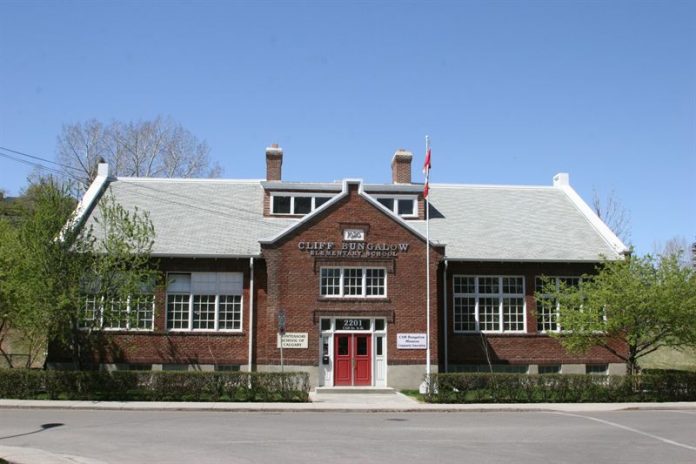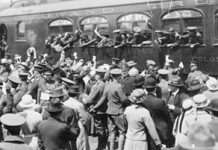Cliff Bungalow School has been an educational and social focal point of the community, serving in an educational capacity from 1920 to 1988 and subsequently as a community meeting place and the home of the community association. Known until 1927 as the 22nd Avenue Bungalow School, before taking the present name of “Cliff Bungalow School”, the building functioned for 68 years as the community’s elementary school.
Cliff Bungalow School is a distinctive bungalow school type designed by Calgary Board of Education staff architect William Branton. It is valued as a well-preserved example of a later phase of “bungalow” school designs in Calgary. Unique to Calgary, the “bungalow” school-type originated with the “cottage” school in 1910, originally conceived by Alberta Public Works. The cottage schools were built as temporary and cost-effective wooden schools, which could be resold as residential units when their educational use became redundant. During an intense period of growth and immigration in Calgary from 1905 to 1913, school enrollment tripled and permanent school construction in the form of elaborate sandstone schools could not keep pace. In 1912, Hugh McClelland, Calgary School Board’s first Building Superintendent, established an in-house department to deal specifically with the planning and design of new schools. He hired William Archibald Branton, the Board’s longest serving architect and building superintendent. Branton developed the four-room bungalow school plan – a larger, more sophisticated temporary school plan than the cottage school. Like its predecessor, the bungalow school was designed for conversion into residential units. Prototypes were built in Ogden, North Mount Pleasant and Riverside in 1913.
Immediately after the First World War, Branton designed four brick bungalow schools, larger and more refined than the original prototypes. Cliff Bungalow School is a good, intact example of this later period of bungalow school design. The other three identical schools of this type were constructed in 1920 and located in Riverside (extant), Tuxedo Park (extant), and Glengarry (demolished). Typical elements of the bungalow school design were one-and-one-half-storey massing, low-pitched side gabled roofs with a long front shed-roof dormer, central entryway, and banked multi-pane wooden windows and operable transom lights to allow ample light and air circulation. The interior featured four symmetrical and nearly identical classrooms with two on each side of a central hallway. Separate boys’ and girls’ entryways were accessed from the sides or rear of the building. The basement contains separate boys’ and girls’ lavatories while the attic was divided into a teachers’ office and storage space.
Apart from the design’s distinctive form and layout, the building is a fine example of Arts and Crafts style architecture. Art and Crafts influences are found in the exaggerated texture of the brick cladding, lending the building an overtly rustic finish. Other characteristic features of the style include the parapeted gables with corbelled abutments, corbelled cornice courses, brick label mouldings above the doors and windows and large interior brick chimneys.
Due to the school’s distinctive architecture, and its prominent historic use in the community, the property is also a community landmark. In fact, the landmark nature of the school property ultimately led the “Cliff Bungalow” community to take its name from the school in the 1970s.
Prior to the property’s use as a school, it was part of an area used in the late 19th and early 20th centuries for the Tsuutina First Nation people when they came into Calgary.










